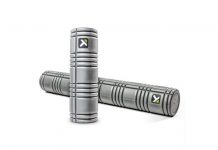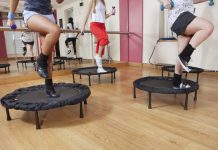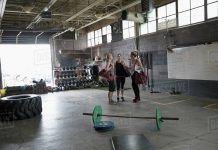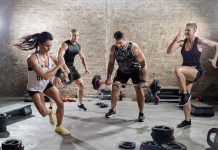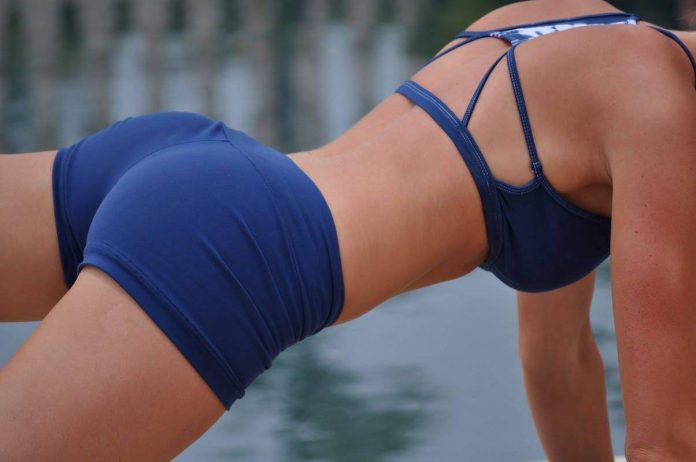
An Introduction to Butt Bolstering
In the last decade, a yes response to the question “does my butt look big in this?” has slowly moved from being met with dismay to glee. Gone are the days of booty minimisation, and more and more individuals are trying to find new ways to contour their curves.
Here’s our glutes guide in all its glory (we’ve included a simple stretching exercise and a more intensive kettlebell workout suitable for all genders and body types, along with practical background information).
Read on for a firm and well-rounded introduction to bolstering your butt.
Background
Besides aesthetic considerations, working the glutes is very important for overall fitness, wellbeing and physical conditioning. The gluteus maximus is one of the body’s largest muscle systems and is considered a part of overall core strength.
Having well-toned and supple glutes can go a long way stop you from getting a bad back. This is because (should you neglect to condition your glutes) your lower back will have to work even harder to support your weight, leaving you exposed to instability, deterioration and inflammation.
A lot of people lead fairly sedentary lifestyles, eg. sitting at a desk all day long – so, working your glutes becomes all that more important – given these modern lifestyle constraints. The glutes contract to rotate the hips in every direction, meaning that they are crucial for all types of movement. Since they are integral to the body’s structure, giving them a good solid workout is likely to increase your metabolic rate.
Equipment
When it comes to working your glutes, there are a number of exercises that you can use to achieve good results. Some may require your body weight alone, or potentially even a whole gym’s worth of equipment! However, to be practical we have gone down the middle road and given you some simple exercises that require just a couple of pieces of easily accessible equipment.
One is the stability ball (aka exercise ball/swiss ball/fit ball). It is a ball that is filled with air and constructed of a soft, elastic material with a diameter of approximately 35 cms to 85 cms when inflated. This exercise equipment staple is useful for both sport and performance purposes, as well as a great tool for stretching and rehabilitation. They are suitable for anyone – from children to the elderly. One of the biggest benefit of working out with a stability ball is that you will use multiple muscle systems and, thus, improve your balance and coordination overall.
The other is the humble kettlebell. Just like the name suggest, kettlebells are metal cannonball shaped weights with handles and a flat bottom. They have gained popularity due to their unique ability to contribute to both strength and cardio training, making them the perfect all-in-one training tool. They range in weight from 4 kg to 40 kg. It is commonly recommended for beginners that men start with 16 kg and women with with 8 kg – but, this does differ slightly person-to-person.
Exercise 1:
To stretch your butt, hamstrings and lower back (and make these muscle groups increasingly limber and strong) try the donkey-kick with stability ball.
Here’s how to do it:
- Assume a starting position by balancing both hands on the stability ball to support your weight.
- Balance on right foot, and kick left foot out behind you.
- Repeat the same motion with the alternate foot.
Exercise 2:
If you are wanting to build up the buttocks a little more, squats are a good way to go. Combine this with a kettlebell to increase resistance during front squats, to form kettlebell front squats.
Here’s how to do it:
- Stand with your feet shoulder-width apart.
- Hold the handle of the kettlebell with both hands (either have your arms in a downward position or, bend your elbows and hold the kettlebell at your chest).
- Keep you chest up and push your buttocks back.
- Squat as far down as comfortably possible (make sure you look straight ahead during this movement to stop the weight of the kettlebell from making you stoop).
- Pause for 1 to 2 seconds at the bottom of the squat, then stand back up.
The bottom line on butt bolstering
That concludes our introduction to butt bolstering. But wait… there’s more. If you want to keep going, there are a bunch of other exercises out there to tone your butt, and push your gluttonous maximus to the, well… max. The only question you should be asking now is… ‘are you ready for this jelly’?
Read our full review about one of the best workouts Marine Muscle >>


